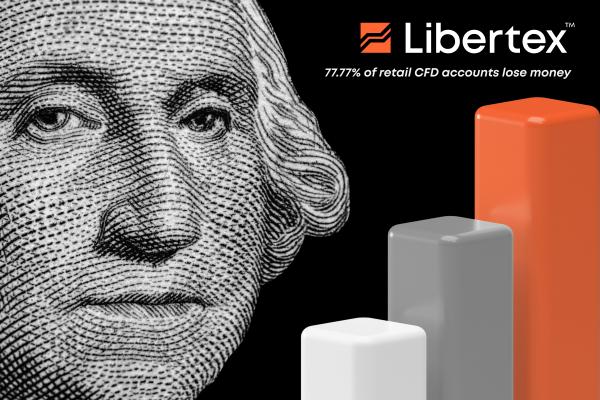The past couple of years have been tough on much of the world, but between severe geopolitical insecurity and astronomical fuel costs, Europe has undoubtedly been the hardest-hit region. And now, after a more-than-deleterious start to 2023, the European economy is starting to show worrying signs of a manufacturing slowdown compared to its US counterpart. As a result, the euro and British pound find themselves in a precarious position against the US dollar, whose domestic economy seems to be faring far better amid a strong jobs market and healthy manufacturing and services PMIs. Though the summer has provided some respite for the fuel-poor Old Continent, winter will be here soon enough, and then fuel insecurity will surely rear its ugly head once more, plunging the European economy back into trouble.
Living in America
In stark contrast to Europe, the US has been gradually improving over the past 12-18 months as a combination of the Fed's policies and an increase in the global trade of energy resources has helped the world's biggest economy drag itself out of the dire straits of 2022 and steadily slash inflation to manageable levels, while also adding increasing numbers of new non-agricultural jobs. Now, the hope is that this slow-but-steady recovery can continue and inflation be pushed down to target levels.
As analysts at HSBC have stated, the US data largely support this "Goldilocks" scenario, which means the grind lower in the USD could extend, especially if we see fewer data disappointments from outside the US. As illogical as it seems, a weaker dollar is actually exactly what the US economy needs right now. Back in the days of EUR/USD parity in Q3 2022, US imports were prohibitively expensive for the EU. However, at more reasonable levels of 1.10 or above, US gas and other exports are much more attractive. However, after the Fed's latest 0.25% rate hike, the likelihood of a rise up towards 1.15 became even more distant. Following the US regulator's decision, the greenback strengthened against most of the major world currencies.
But what about the euro?
Europe's problems are multiple and well-known. Aside from geopolitical instability and a persistent energy crisis, manufacturing and job growth are also in long-term negative downtrends. And as much as the dollar aims to strengthen, the euro appears to be shifting towards a downward trajectory. It wasn't so long ago — back in November 2022, in fact — that EUR/USD was at parity. Now, the possibility that we could be headed back in the same direction is growing by the day, something that neither the EU nor the US wants at a time when the Old Continent is likely to need to import American natural gas.
After reaching a local high of 1.12 in mid-July, EUR/USD is now down to 1.10. Unfortunately, the ECB is still in a "damned if it does, damned if it doesn't" scenario in which it really needs to cut rates to stimulate economic activity. But it can't do this without tanking the single currency. For this reason, many analysts see an extended spell of weakening to come for the euro. Indeed, in a recent note, Danske Bank predicts that the relative strength of the US economy will weigh on the Fibre in the coming months, forecasting the cross at 1.06/1.03 in 6-12 months. What's more, this is not only a general trend but a specifically euro-centric problem. During the same time that the euro has lost 1.8% against the dollar, sterling has actually managed to gain 2.5%.
Japan bucks the trend
As we touched upon previously, the US dollar was able to gain against many of the world majors after the Federal Reserve announced its much-anticipated rate hike, but one notable exception to this trend was the Japanese yen. It all came down to the Bank of Japan's (BoJ) post-meeting comments in which it stated that it would allow for "greater flexibility" in its 10-year government bond yields.
This immediately prompted the 10-year to rise 0.575% for the first time since 2014 and a moderate dip in USDJPY to 139.54. It might not seem like a lot to most Westerners, but in the context of negative interest rates, that's quite a big deal. As the BoJ continues to target 2% inflation, we can most likely expect the yen to remain stable. There are concerns that Japan's ultra-low rates make the yen vulnerable to selling, but this is nothing new, and — as we saw this week — it hasn't stopped the yen from gaining ground on its major competitors. Let's not forget that the yen is also a favoured safe-haven asset, and, at this time of ongoing global uncertainty, this will surely drive interest in the Asian currency.
Trade CFDs on Forex with Libertex
Libertex is a multi-award-winning CFD broker offering trading and investment in a wide range of asset classes, from stocks, commodities and crypto to indices, options and Forex. Libertex offers both long and short positions in a variety of CFDs. With Libertex, you can trade CFDs in EUR/USD, EUR/GBP, GBP/USD, and USD/JPY, so you're always sure to find a currency pair to suit you. For more information or to create an account of your own, visit www.libertex.com today!
Risk Warning: CFDs are complex instruments and come with a high risk of losing money rapidly due to leverage. 77.77% of retail investor accounts lose money when trading CFDs with this provider. Tight spreads apply. Please check our spreads on the platform. You should consider whether you understand how CFDs work and whether you can afford to take the high risk of losing your money.


